Too Many Star Trek Attack Wing Ships? I Don’t Understand The Question
This post is about the table top minatures game Star Trek Attack Wing. Read an introduction to it here.
Someone had posted that they were selling their Star Trek Attack Wing fleet. It was with a bit of sadness that I realized I was not at all interested in it. It wasn’t the price. It wasn’t the shipping costs from some far off location. It wasn’t even the make up of the ships. In fact I realized the make up of ships wasn’t even interesting to me. I didn’t want any of them.
Because I realized I already owned them. All of them. I don’t know how many ships I have. At one point last year I counted and I had over 330. That was before the new faction packs and starter sets and card packs came out. I bought at least one of each and generally more than one. (I bought four copies of the Ferengi Faction Pack specifically because I needed “just one more Kemocite.”)
Do I have a problem? I prefer to not think about it.
But, I’ve realized a couple of things by owning multiple copies of every ship. First, it’s not really about how many ship you own. My largest playable fleet was 12 Romulan Science Vessels to win the Klingon Civil War 3 OP. But, like most of you, typically I play 3 or 4 ships in a fleet.
I do have two sons who love to play, so I have to be able to field multiple competitive fleets at the same time, but still there’s no benefit to having endless copies of every ship.
However, I also learned a thing or two about organizing the cards. Typically there are two schools of thought on how to store cards: boxes or binders. I’m a binders guy.
Players just joining the game often ask about how to organize their ship and upgrade cards. I’m going to explain how I do it. But, there are as many storage methods as there are players. This works for me. And considering I literally own every card in the game, my system is scaled for a lot of cards.
For such a large collection, it takes a surprisingly small amount of space. This bin holds all the cards, ships, movement dials, and bases.
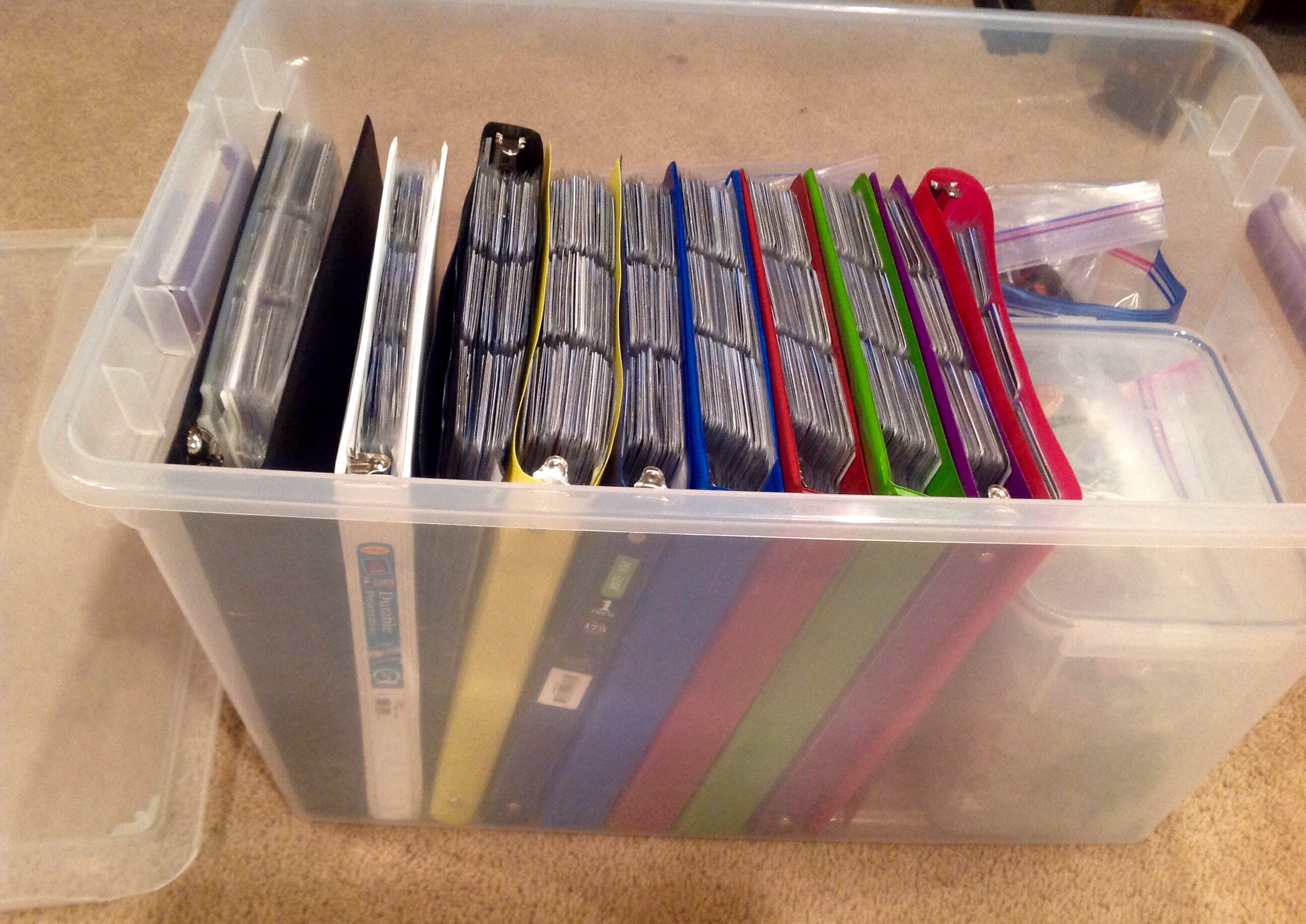
Each binder is a different faction, organized by color.
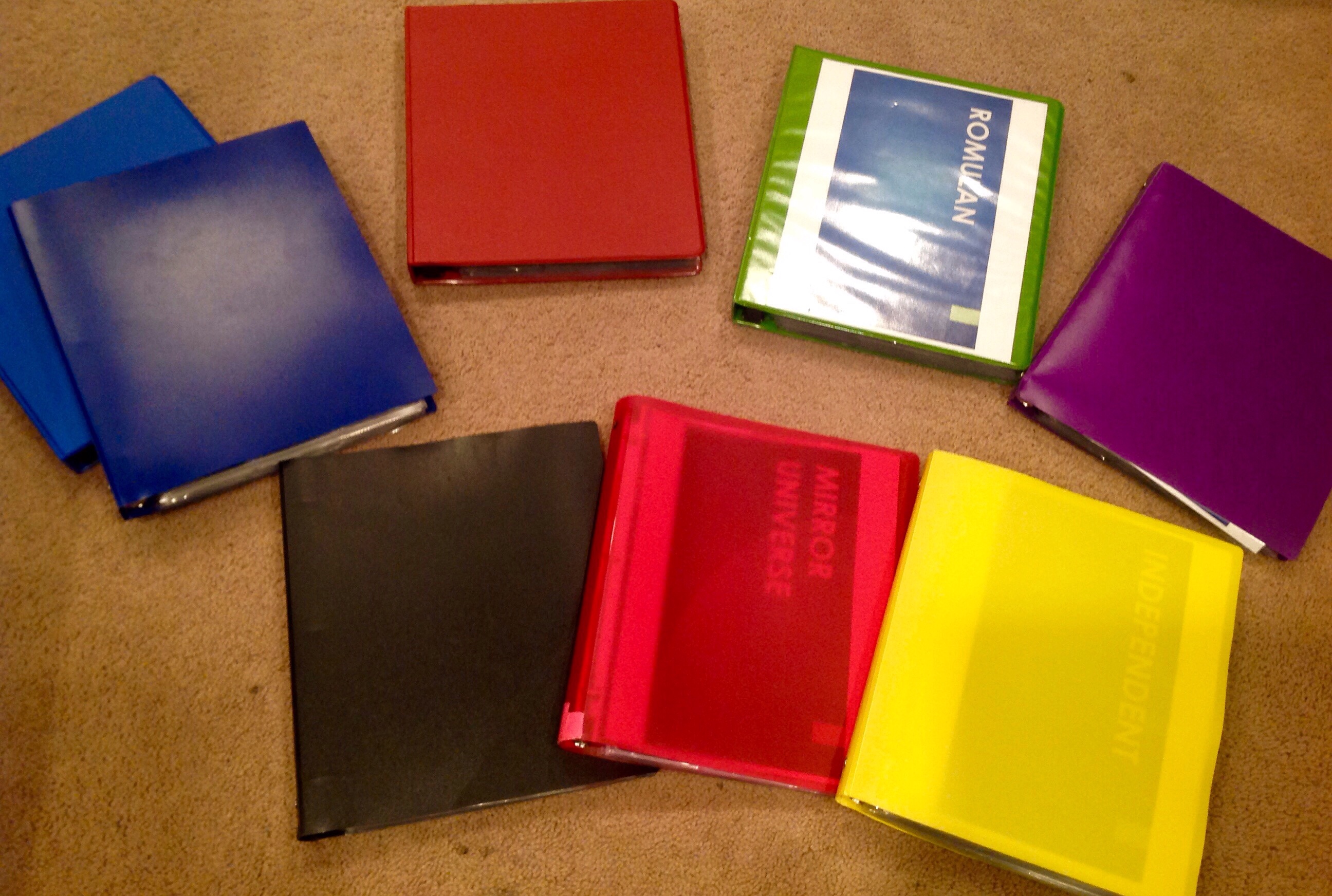
- Blue: Federation, Vulcan, Bajoran (Two binders)
- Red Hardback: Klingon
- Green: Romulan
- Purple: Dominion
- Black Softback: Borg, Species, Q
- Red Softback: Mirror Universe
- Yellow: Independent, Ferengi, Xindi, Kazon
In addition I have two other binders.
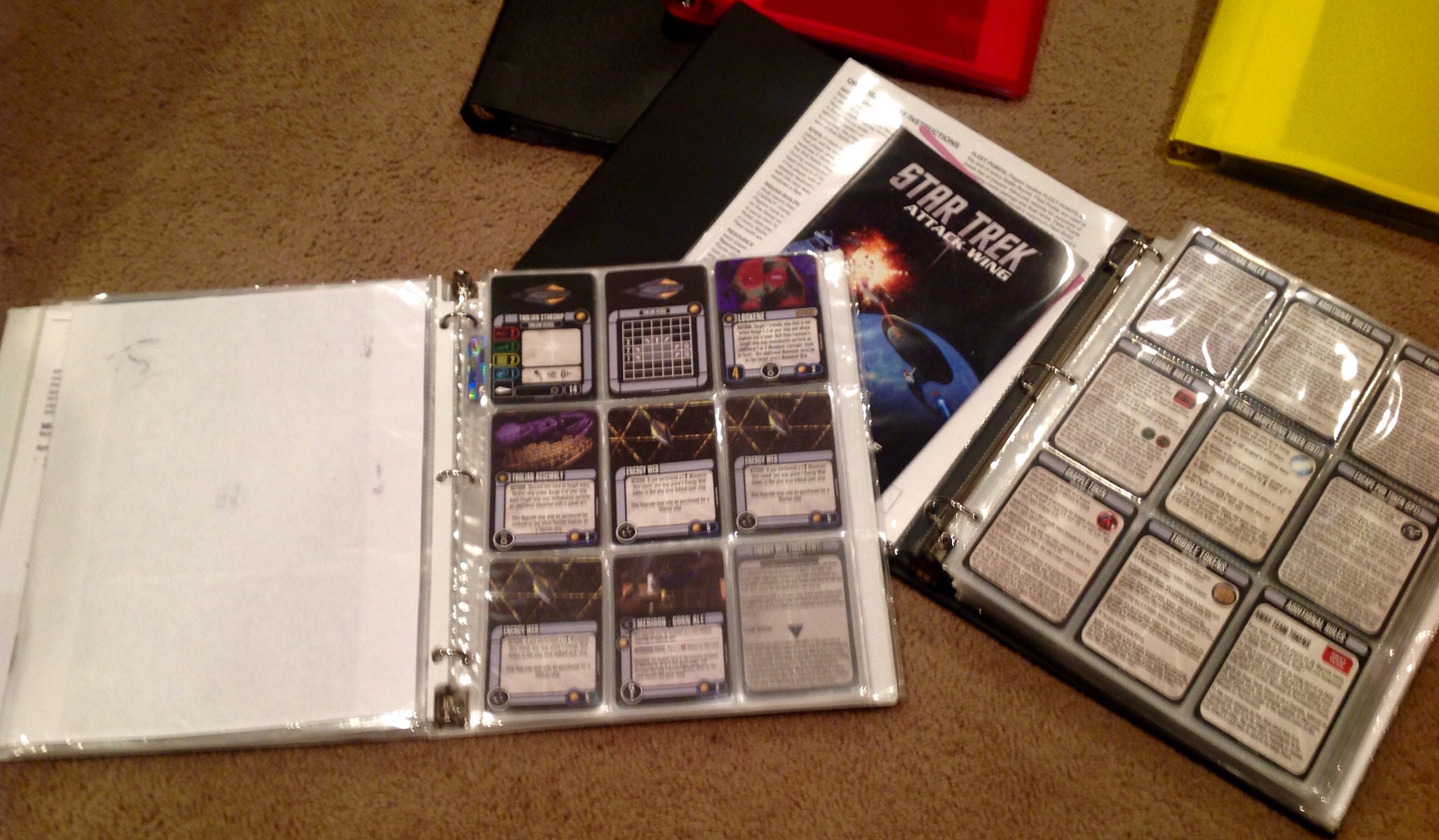
- Black Hardback: Rules, scenarios, resources, banned cards
- White Hardback: Current fleets my sons and I are using
Having the factions divided by color makes it easier to build faction pure fleets. Our FLGS typically plays either Faction Pure or Penalty Pure. So, I’m typically building fleets out of just one faction.
Within each binder I have a specific order.
- Ships – by descending ship cost
- Admirals – by descending Admiral Skill
- Captains – by descending Captain Skill
- Elite Talents – by descending cost
- Crew Upgrades – by descending cost
- Tech Upgrades – by descending cost
- Weapons Upgrade – by descending cost
- ? Upgrades – by descending cost
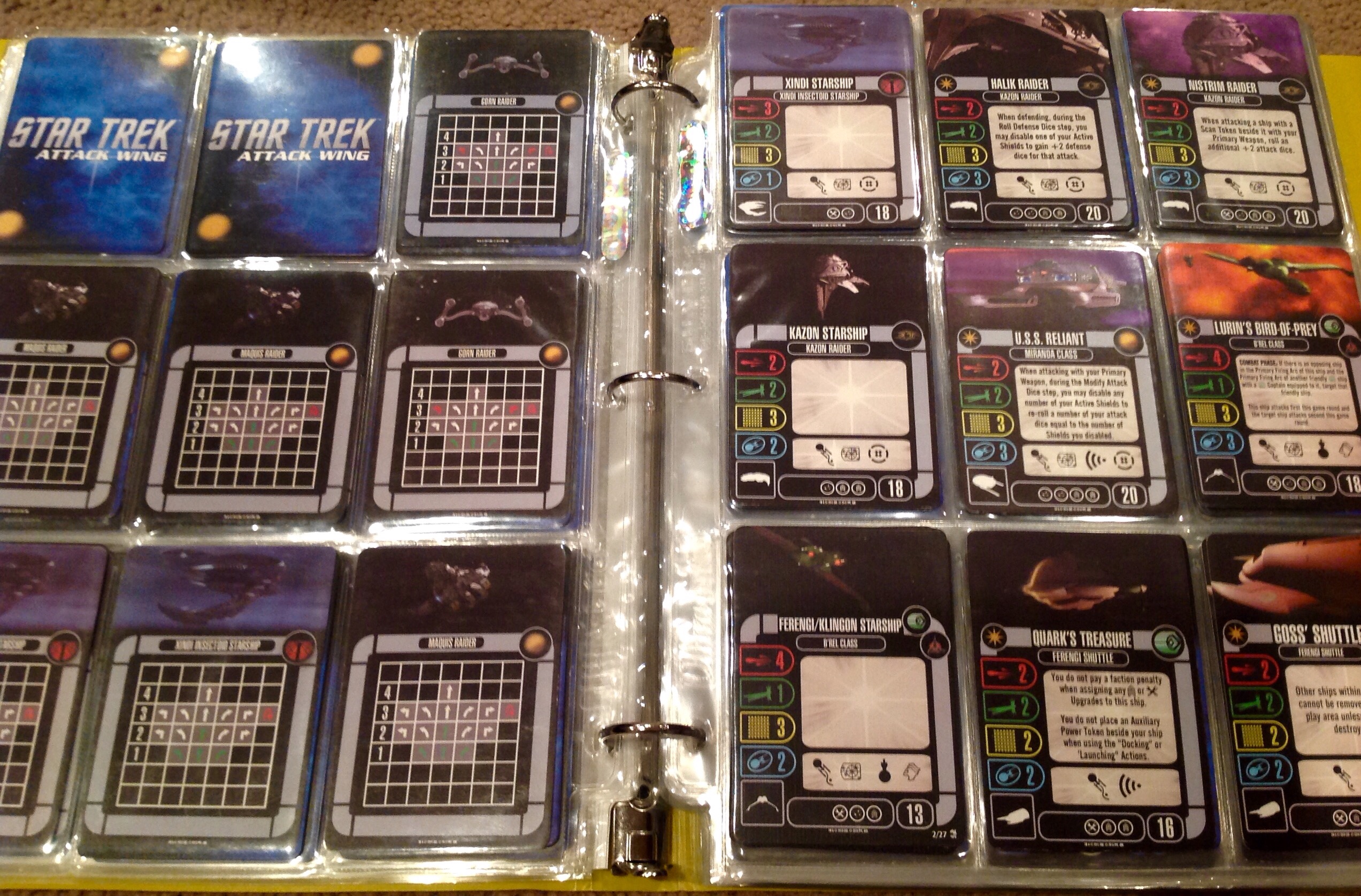
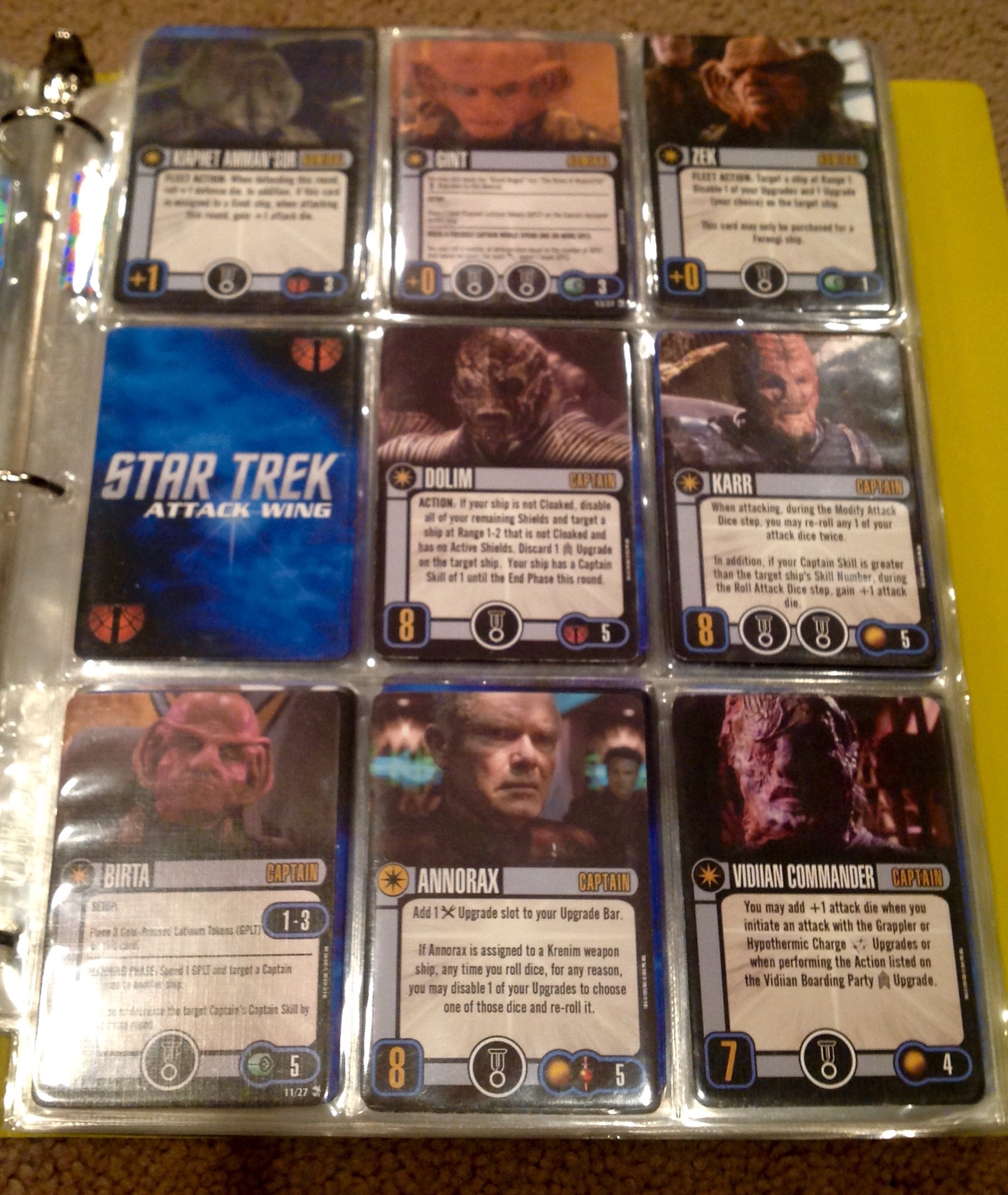
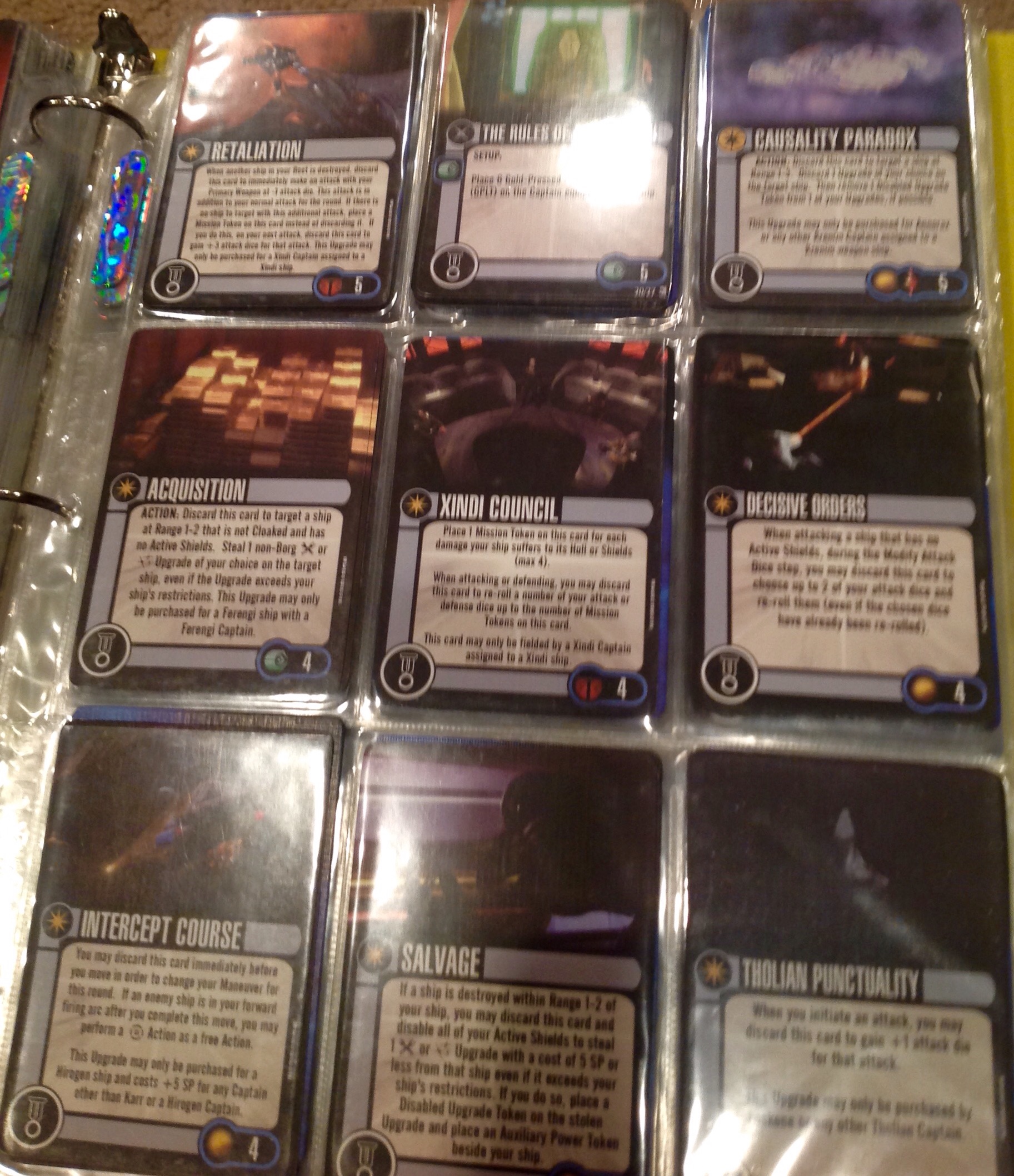
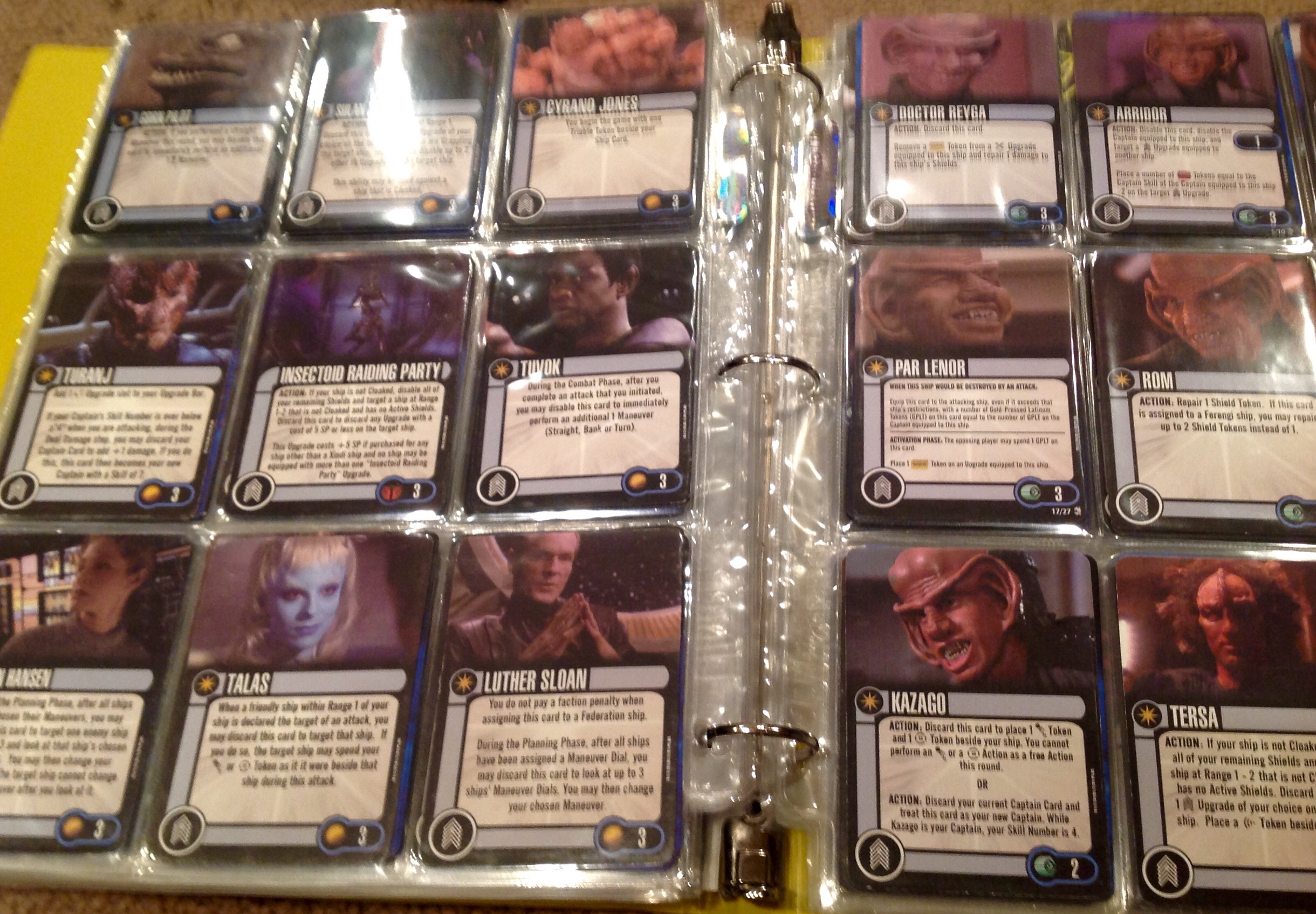
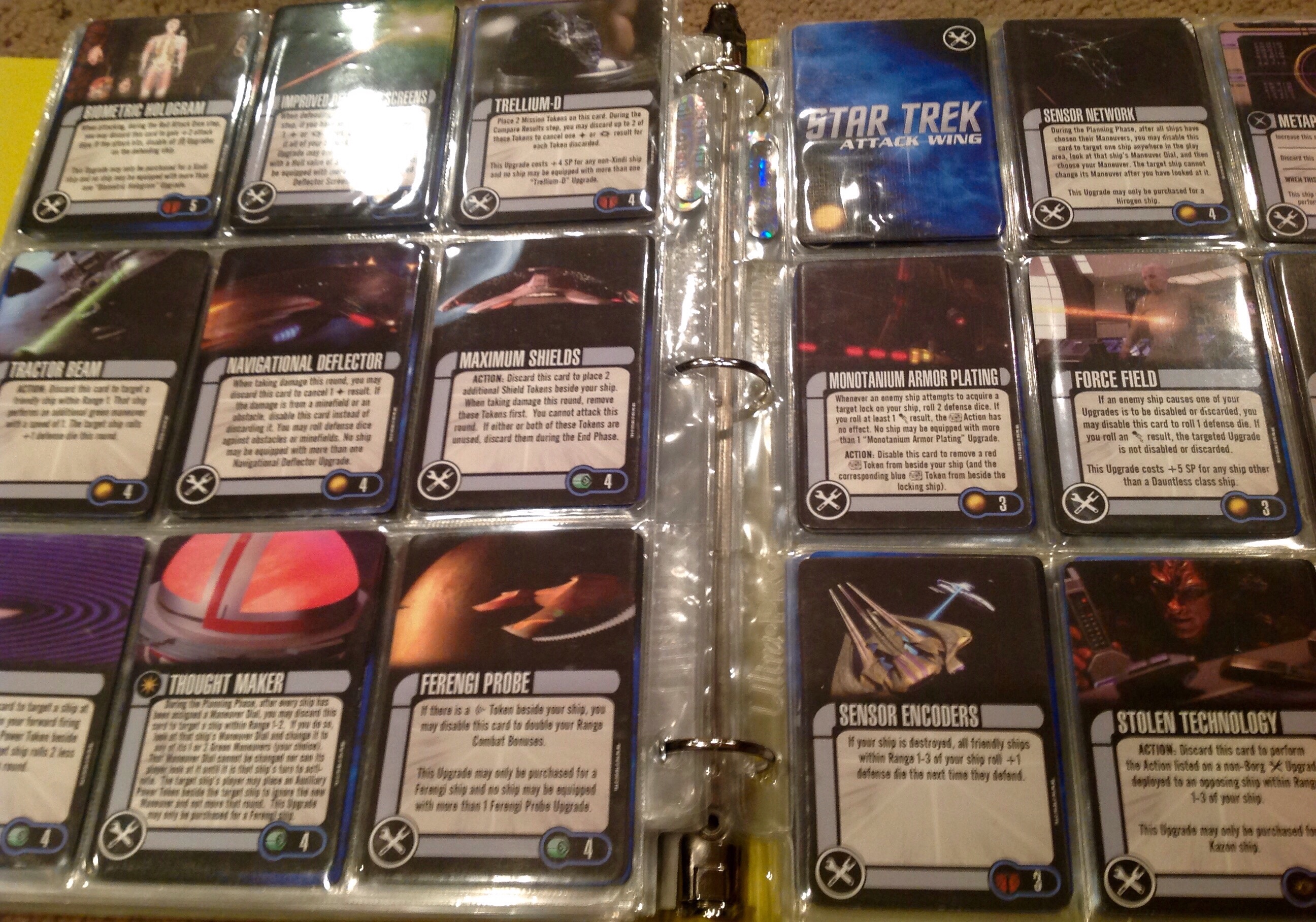
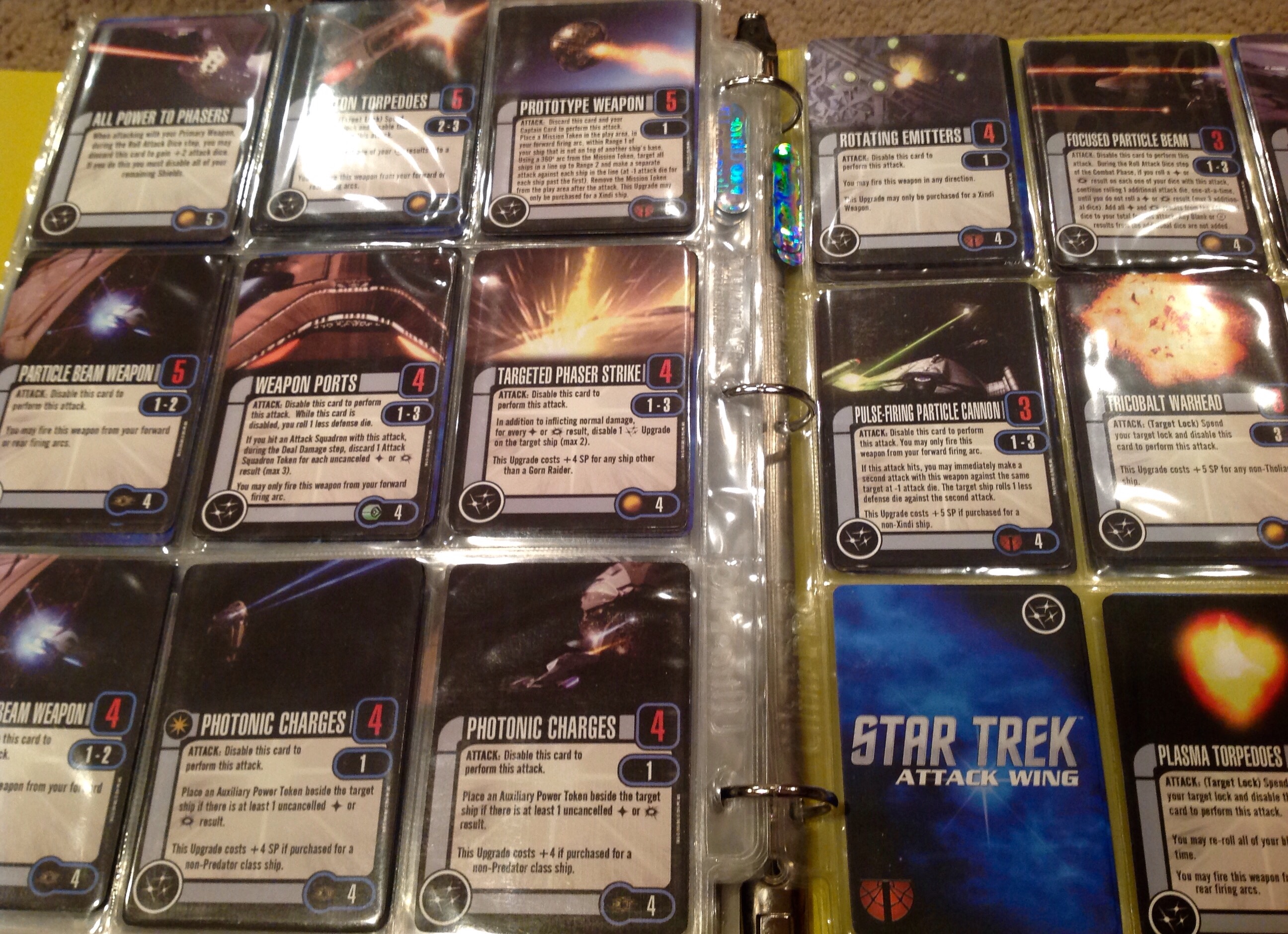
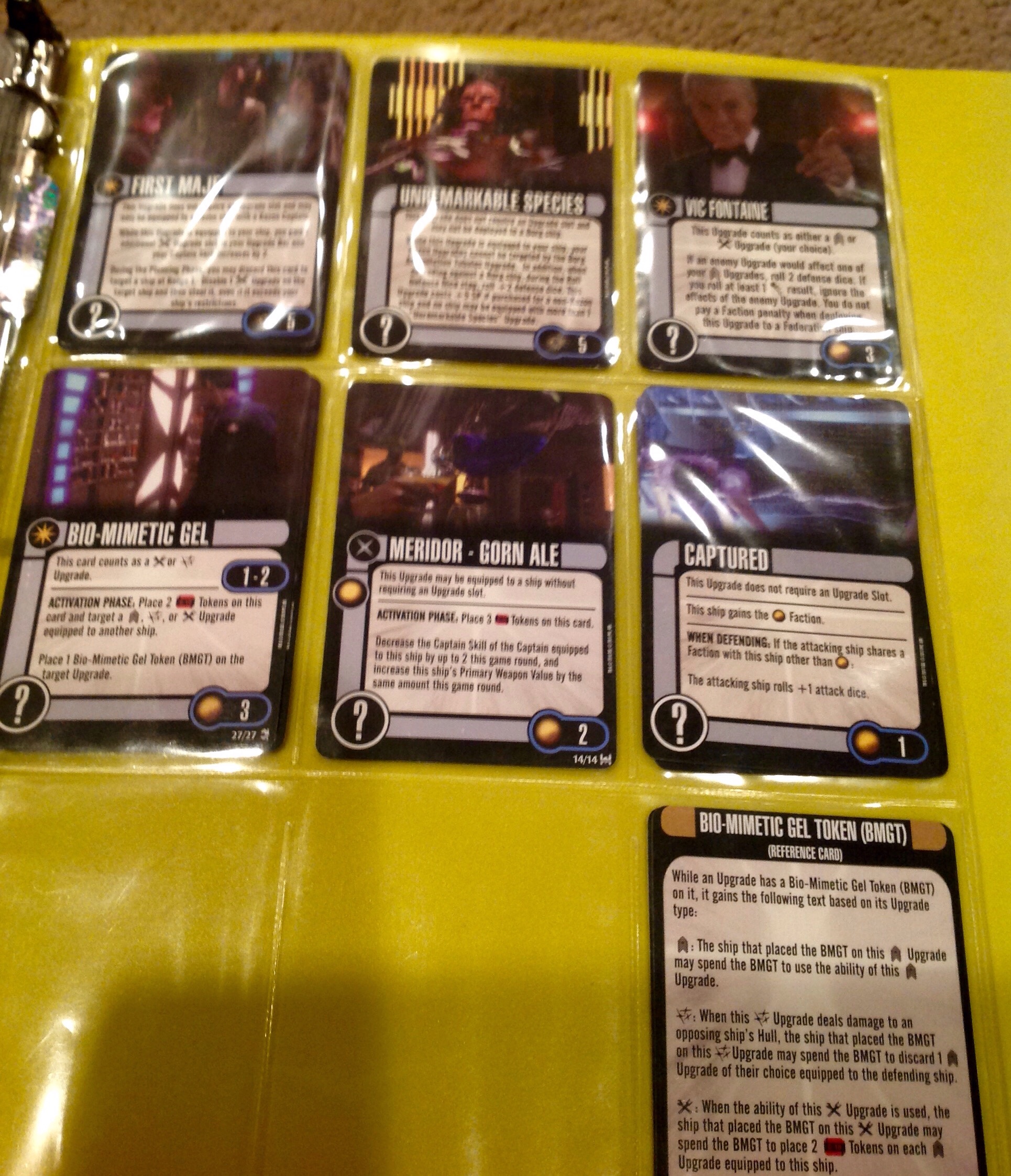
Many people build their fleets using Utopia, an excellent free online tool for fleet building. After they’ve built their fleet online, they then pick and choose the upgrades from their collection. While I use Utopia, it’s not how I build fleets. I pick a ship, then flip through the binder choosing captains, crew, tech and weapons.
And that’s one of the benefits of a binder method. I don’t have to remember which cards I have. I can scan each card as I flip through my binders. If I have 3SP left and a TECH slot open, it’s simple to find which TECH Upgrades are 3SP or lower. When I have a ship built, I put the cards into another card sheet and store them in my white binder. I then use the card holder sheet directly when I go to play.
I discovered last year that I don’t really needevery card I own. I went through and did a purge. I kept 2 copies of every unique card and 3 copies of non-unique cards. The rest of sent off to a friend who resells cards. I’ll make exceptions for certain cards. I own 4 Kemocite Upgrades. I also have 4 Ferengi Torpedoes. But, for the most part I got rid of a lot of duplicate cards.
For the cards I still have, I stuff multiple cards into a single slot. I’ll use both the front and back of a single card slot. Sometimes there will be 6 cards shoved into a single slot. (3 non uniques facing one direction and 3 facing the opposite.)
Negatives
There are reasons many people don’t adopt the binder method.
First, it can be hard on the cards. I’m a player, not a collector. I try to take care of my cards, but I’m not preserving them in mint condition. Sliding them in and out, especially with other cards in the same slot, puts wear on them.
Second, and more frustrating, is that it’s a pain to add new cards. My Federation/Vulcan/Bajoran factions have two binders because there are so many cards. The first binder holds all the ships, Admirals, Captains and Elite Talents. The second binder holds Crew, Tech, Weapons and ? Upgrades. There are about 110 Fed/Vulcan/Bajoran Crew Upgrades. When a new ship is released, I have to shuffle hundreds of cards to get the new crew into their proper spots. I try to sort my new ship upgrades right after I get them. You know, while I’m still excited about them.
Third, my binder system breaks down when an Upgrade is Dual Faction. The new Kelvin Timeline upgrades appear to all be Dual Faction, Mirror Universe and Federation or Klingon. I have to put the upgrade somewhere. I typically put it in the binder for the faction I play most. That means Independent if it shares with anything else. But, it also means I sometimes forget there’s an Upgrade that I could add to my fleet and remain penalty pure.
Finally, the binder method takes a lot of space. People who choose the box method can store cards much more efficiently. I literally lug that bin to every OP I attend. It’s portable. . .mostly.
My method works for me. But, wouldn’t work for some other players. The joy of STAW is that you get to be infinitely creative when you are creating a fleet. The same thing goes for storage methods.
Tomorrow I’ll address how I organize the rest of my STAW stuff, ships, movement dials, etc.
Rodney M Bliss is an author, columnist and IT Consultant. His blog updates every weekday. He lives in Pleasant Grove, UT with his lovely wife, thirteen children and grandchildren.
Follow him on
Twitter (@rodneymbliss)
Facebook (www.facebook.com/rbliss)
LinkedIn (www.LinkedIn.com/in/rbliss)
or email him at rbliss at msn dot com(c) 2018 Rodney M Bliss, all rights reserved

Trackbacks & Pingbacks